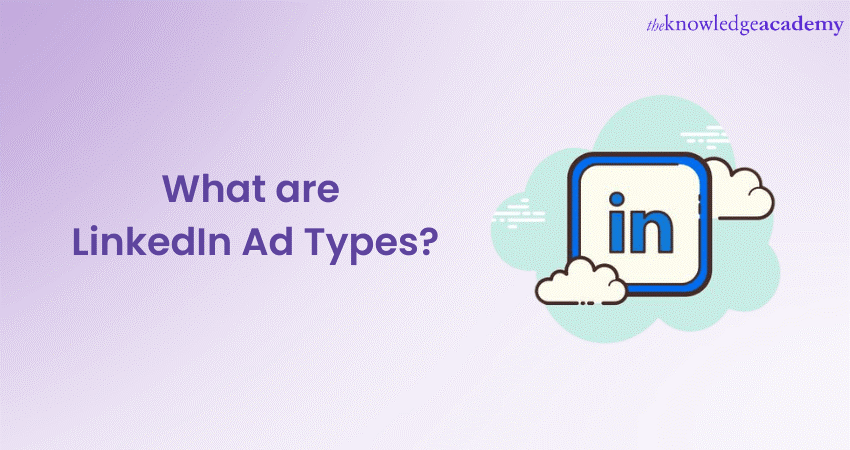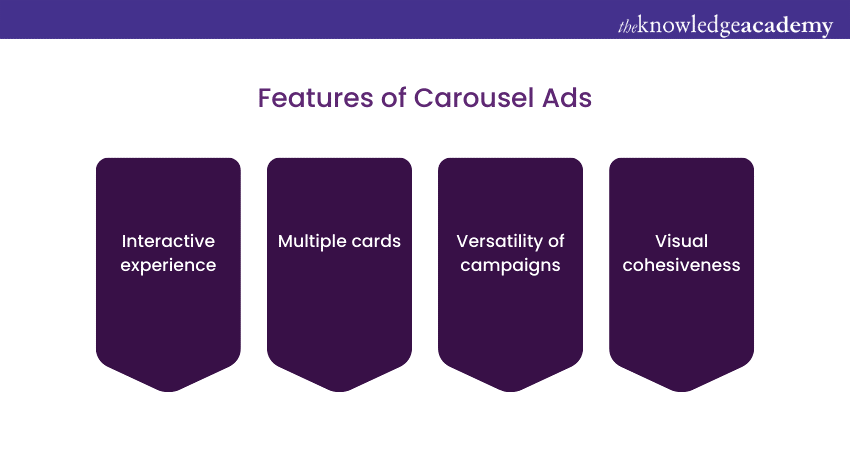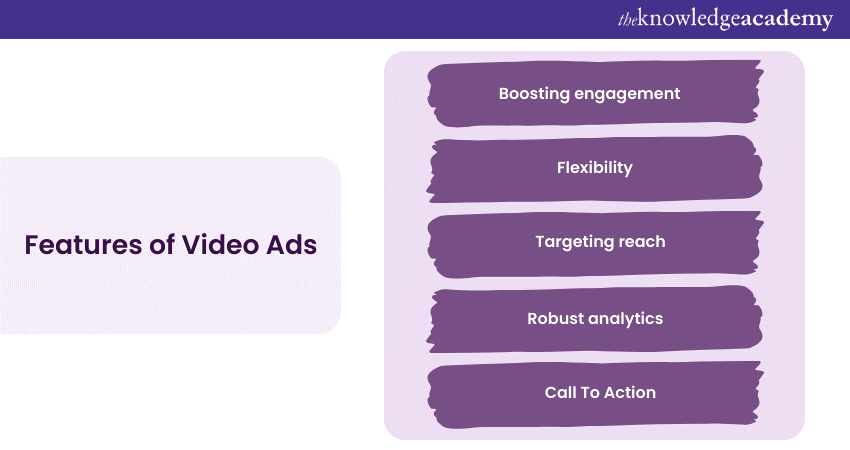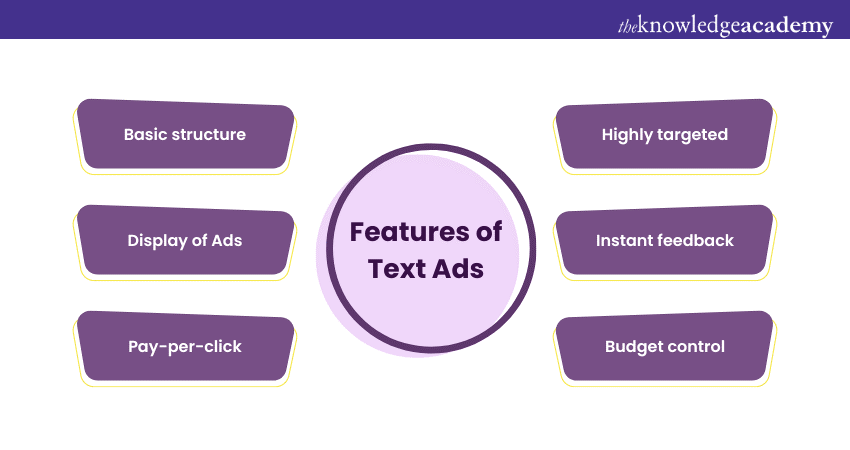We may not have the course you’re looking for. If you enquire or give us a call on +44 1344 203 999 and speak to our training experts, we may still be able to help with your training requirements.
Training Outcomes Within Your Budget!
We ensure quality, budget-alignment, and timely delivery by our expert instructors.

LinkedIn is a premier professional networking platform. It offers a range of advertising solutions tailored for Business-to-business (B2B) Marketing and targeted professional outreach. It is the best place to grow your professional connections and business. Various Types of LinkedIn Ads are observed to have maximum outreach to consumers. But what are these LinkedIn Ad Types?
According to Statista, in April 2023, more than 1.6 billion people visited LinkedIn. These statistics reveal that with such a vast usage of LinkedIn, businesses can learn about the various Ad Types utilised on this platform and reach a wider audience. Want to know how? In this blog, you are going to learn the different LinkedIn Ad Types and the importance of these Ad Types. Read ahead to learn more!
Table of Contents
1) Sponsored Content
2) Sponsored Messaging
3) Display and Dynamic Ads
4) Text Ads
5) Conclusion
Sponsored Content
Sponsored Content on LinkedIn is one of the many Types of LinkedIn Ads where brands pay to promote their posts directly within users' feeds. Resembling regular posts but labelled as "Promoted", this Ad Type offers a native experience. This also blends seamlessly with other content, ensuring higher engagement and visibility among targeted professionals. It comprises various other types:
Single Image Ads
Single Image Ads are simple advertising formats on LinkedIn, featuring one primary image with accompanying text. The power of these Ads stems from their uncomplicated nature, focusing solely on one impactful image. These Ads focus on the following:
a) Image importance:
1) Central element of the ad.
2) Evokes emotions and grabs attention.
3) Must resonate with the target audience to be effective.
b) Text components: Text components further comprise the following:
1) Headline: Short and captivating, designed to immediately engage the viewer.
2) Description: Provides supplementary information. It also drives users to the desired action.
c) Engagement: A well-constructed Single Image Ad can drive significant user interaction. It does so by collecting likes and shares, website visits and product inquiries.
d) Targeting capabilities: Leveraging LinkedIn's detailed targeting options allows advertisers to reach specific job titles or functions. They can target the audience by industry, skills, or company size. Moreover, advertisers can ensure the Ad is viewed by the most relevant audience.
e) Cost-effective: Given their simple nature, Single Image Ads often have a competitive Cost Per Click (CPC) or cost Per Impression (CPM), offering a good Return On Investment (ROI).
f) Versatility: Suitable for a range of campaigns, from brand awareness to event promotions and product launches.
g) Optimisation: A/B testing with different images or text variations helps in refining the ad for the best results.
h) User experience: Designed to blend seamlessly into the LinkedIn feed, offering a non-disruptive and native advertising experience.
Carousel Ads
Carousel Ads are an innovative advertising format on LinkedIn. They offer businesses a dynamic way to showcase their brand story or multiple offerings in a single ad unit. By using a series of swipeable cards, these Ads provide a more interactive and engaging experience for users. Here's a deeper look into Carousel Ads:

1) Interactive experience: Unlike static Single Image Ads, Carousel Ads invite users to swipe through multiple cards. This leads to increased engagement and deeper storytelling potential.
2) Multiple cards: Advertisers can use up to 10 cards within a single ad, each with its own image, headline, and clickable link. This provides ample space for creative content.
3) Versatility: They're perfect for diverse campaigns – be it showcasing a range of products, sharing multiple testimonials, or unfolding a brand narrative in sequential cards.
4) Visual cohesiveness: Consistency in design across cards ensures a cohesive brand message. Whether it's through colour schemes, design motifs, or typography, visual harmony can amplify the impact.
5) Detailed analytics: LinkedIn provides insights on card-by-card performance. Thus, advertisers can gauge which segments of their Carousel Ad are most engaging and why.
6) Customisation: Based on user interaction data, businesses can optimise and reorder cards to improve conversion rates and engagement.
Video Ads
LinkedIn's Video Ads offer brands a dynamic and immersive way to connect with their target audience. The following features will help you to learn more about them:

1) Engagement boost: Videos, by nature, tend to captivate viewers more effectively than static images. The motion, sound, and visual storytelling elements hold a user's attention, leading to higher engagement rates.
2) Storytelling excellence: Video Ads allow for a deeper narrative. Whether it's showcasing company culture, explaining a product's features, or sharing customer testimonials, the medium provides depth.
3) Flexibility: Advertisers can choose video lengths that best suit their message. They can choose from quick 15-second snippets to more extended, in-depth explorations.
4) Auto-play feature: On LinkedIn, videos auto-play silently in users' feeds, which immediately draws eyes to the motion and encourages users to click for sound.
5) Targeted reach: Combined with LinkedIn's precise targeting options, Video Ads can reach decision-makers, industry leaders, or specific professional groups. This can ensure relevant viewership.
6) Robust analytics: LinkedIn provides detailed metrics. These metrics show view count, view completion rates, click–through rates, etc. These analytics help advertisers refine their content for maximum impact.
7) Call To Action (CTA) integration: Videos can incorporate CTAs. These CTAs guide viewers to take desired actions, be it website visits, sign-ups, or product purchases.
Unlock the power of LinkedIn marketing with our LinkedIn Marketing Masterclass - sign up now!
Sponsored Messaging
Sponsored Messaging on LinkedIn offers advertisers a direct line to users' inboxes. Comprising personalised messages, these LinkedIn Ad Types ensure higher visibility and engagement. Whether promoting events, products, or services, sponsored messaging provides a more intimate and targeted approach to connecting with specific professional audiences on the platform.
Message Ads
LinkedIn's Message Ads, formerly known as Sponsored InMail, have redefined direct advertising on the platform, making personal connections at scale. Here's a comprehensive look at this unique ad type:
1) Direct inbox access: Message Ads bypass the clutter of traditional advertising mediums by directly reaching a user's LinkedIn inbox, ensuring higher visibility.
2) Personal touch: The format fosters a sense of one-on-one communication. Personalised greetings and content tailored to individual recipients make these Ads feel more like direct correspondence than broad-spectrum advertising.
3) Broad applications: Brands can use Message Ads for various purposes. It ranges from event invitations, product launches and webinar sign-ups to distributing content assets like whitepapers.
4) Engagement metrics: LinkedIn provides insights into delivery success, open rates, and click-through rates. These metrics enable advertisers to gauge the efficacy of their campaigns and adjust accordingly.
5) Real-time delivery: Message Ads are delivered when users are active on LinkedIn. These messages ensure immediate notification and increased chances of interaction.
6) Mobile Optimisation: Considering the rise of mobile usage, Message Ads are optimised for mobile devices. They ensure a smooth and user-friendly experience.
7) CTAs: These Ads can incorporate clear Call To Action buttons. They guide recipients towards a desired response, be it by visiting a website, registering for an event, or any other action.
Conversation Ads
These LinkedIn Ad Types elevate the user experience by introducing interactivity and tailored pathways. Here’s an in-depth examination of Conversion Ads:
1) Interactive dialogues: Unlike static Message Ads, Conversation Ads encourage back-and-forth interaction. Users are presented with multiple-choice responses, enabling them to navigate the conversation according to their interests.
2) Tailored pathways: Advertisers can design various conversational routes. Depending on a user's response, the subsequent message or option is tailored. This ensures the conversation remains relevant and engaging.
3) Versatile use cases: Whether it's guiding a user through product choices, gauging interest in services, or conducting simple surveys, the interactive nature of Conversion Ads offers diverse applications.
4) Immediate feedback: Advertisers gain insights directly from user interactions, understanding preferences, pain points, or interest areas in real time.
5) Enhanced personalisation: With the capability to adapt in real time based on user choices, Conversation Ads can offer hyper-personalised content or offers.
6) Rich metrics: Beyond open and click-through rates, these Ads provide data on interaction patterns. This helps advertisers refine conversational flows for optimal engagement.
7) Engagement boost: The interactive nature demands user participation. This often leads to higher engagement rates compared to traditional ad formats.
Display and Dynamic Ads
LinkedIn's advertising suite includes both Display and Dynamic Ads. Each of these is designed to offer a unique and impactful approach to connecting with audiences. Here's a detailed look into these ad formats:
1) Display Ads: Display Ads provide the following benefits:
a) Visibility: These are typically visual banners placed on the side or top of the LinkedIn interface.
b) Traditional format: Display Ads follow the conventional banner-style advertising but are fine-tuned for a professional audience on LinkedIn.
c) Branding: They're especially effective for brand awareness campaigns, given their prominent placement.
2) Dynamic Ads: Dynamic Ads provide the following:
a) Personalisation: These Ads auto-customise their content based on LinkedIn user profile data. For instance, a Dynamic Ad might showcase a user's profile picture with a message like "Imagine yourself at [Company Name]".
b) Engagement: By leveraging user-specific data, these Ads ensure a more personalised and engaging experience.
c) Versatility: They come in different formats, such as Follower Ads, Spotlight Ads, and Job Ads, catering to diverse campaign goals.
d) Immediate CTA: Given their personalised nature, they often have a direct CTA like "Apply Now" or "Follow", increasing chances of interaction.
e) Targeting capabilities: Both Ad formats benefit from LinkedIn's robust targeting tools. They ensure that Ads reach the desired professional demographic.
f) Performance metrics: Advertisers receive detailed analytics on Ad performance. These analytics include impressions, clicks, and engagement rates, facilitating optimisation.
Learn all about Digital Marketing with our Digital Marketing Courses - sign up today!
Text Ads
Text Ads provide a cost-effective yet potent method for brands to reach their target audience. They cater to businesses looking for precision targeting without excessive design complexities. Let's explore the key components of Text Ads to understand them better:

1) Basic structure: Text Ads primarily comprise a headline, a brief description, and a small image. Their simple layout allows for quick creation and deployment.
2) Positioning: These Ads are prominently displayed on the top, right-hand side, or bottom of the LinkedIn desktop interface, ensuring consistent visibility.
3) Pay Per Click (PPC) or CPM: Advertisers can choose their billing method, allowing flexibility in Ad spend strategy. PPC might suit those looking for direct responses, while CPM is ideal for brand visibility campaigns.
4) Highly targeted: Using LinkedIn's granular targeting options, Text Ads can be displayed to specific user groups based on job titles, industries, skills, and more.
5) Instant feedback: Real-time tracking metrics like click-through rates and conversion metrics are available. This enables advertisers to measure and optimise performance swiftly.
6) Budget control: Advertisers can set daily budgets, bid for Ad placements, and easily control spending, ensuring a cost-effective approach.
7) Simplicity: Their simple format is perfect for businesses new to LinkedIn advertising or those looking for a no-frills, direct advertising option.
Begin your journey in social media with our Social Media Masterclass - sign up today!
Conclusion
The various LinkedIn Ad Types cater to distinct marketing needs. From the engaging nature of Video Carousel Ads to the personalised touch of Dynamic Ads and the simplicity of Text Ads, LinkedIn offers comprehensive tools for brands to effectively reach and engage their target audience.
Master the art of influencer marketing with our Influencer Marketing Masterclass - sign up now!
Frequently Asked Questions
Upcoming Digital Marketing Resources Batches & Dates
Date
 Digital Marketing Course
Digital Marketing Course
Fri 24th Jan 2025
Fri 28th Mar 2025
Fri 23rd May 2025
Fri 25th Jul 2025
Fri 26th Sep 2025
Fri 28th Nov 2025







 Top Rated Course
Top Rated Course



 If you wish to make any changes to your course, please
If you wish to make any changes to your course, please


